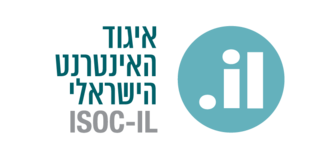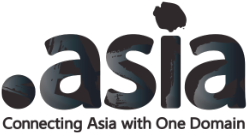
The Internet Corporation for Assigned Names and Numbers is a global multistakeholder group and nonprofit organization head-quartered in the United States responsible for coordinating the maintenance and procedures of several databases related to the namespaces and numerical spaces of the Internet, ensuring the Internet's stable and secure operation. ICANN performs the actual technical maintenance work of the Central Internet Address pools and DNS root zone registries pursuant to the Internet Assigned Numbers Authority (IANA) function contract. The contract regarding the IANA stewardship functions between ICANN and the National Telecommunications and Information Administration (NTIA) of the United States Department of Commerce ended on October 1, 2016, formally transitioning the functions to the global multistakeholder community.

In the Internet, a domain name is a string that identifies a realm of administrative autonomy, authority or control. Domain names are often used to identify services provided through the Internet, such as websites, email services and more. Domain names are used in various networking contexts and for application-specific naming and addressing purposes. In general, a domain name identifies a network domain or an Internet Protocol (IP) resource, such as a personal computer used to access the Internet, or a server computer.
The domain com is a top-level domain (TLD) in the Domain Name System (DNS) of the Internet. Created in the first group of Internet domains at the beginning of 1985, its name is derived from the word commercial, indicating its original intended purpose for subdomains registered by commercial organizations. Later, the domain opened for general purposes.

The domain name gov is a sponsored top-level domain (sTLD) in the Domain Name System of the Internet. The name is derived from the word government, indicating its restricted use by government entities. The TLD is administered by the Cybersecurity and Infrastructure Security Agency (CISA), a component of the United States Department of Homeland Security.

The domain name .edu is a sponsored top-level domain (sTLD) in the Domain Name System of the Internet. The domain was implemented in 1985 to create a domain name hierarchy for organizations with a focus on education. At the time, it was open for registration for entities from any region. Since 2001, new registrants for second-level domain names have been required to be United States–affiliated institutions of higher education.

.us is the Internet country code top-level domain (ccTLD) for the United States. It was established in early 1985. Registrants of .us domains must be U.S. citizens, residents, or organizations – or foreign entities with a presence in the United States or any territory of the United States. Most registrants in the U.S. have registered for .com, .net, .org and other gTLDs, instead of .us, which has primarily been used by state and local governments, even though private entities may also register .us domains. The domain is managed by Registry Services, LLC, a domain name registry, on behalf of the United States Department of Commerce.

.ee is the internet country code top-level domain (ccTLD) of Estonia, operated by the Estonian Internet Foundation.
Generic top-level domains (gTLDs) are one of the categories of top-level domains (TLDs) maintained by the Internet Assigned Numbers Authority (IANA) for use in the Domain Name System of the Internet. A top-level domain is the last level of every fully qualified domain name. They are called generic for historical reasons; initially, they were contrasted with country-specific TLDs in RFC 920.

.kh is the Internet country code top-level domain (ccTLD) for the Kingdom of Cambodia. It was formerly administered by the Ministry of Post and Telecommunications of Cambodia from 1997. In September 2012, the domain name was transferred to the Telecommunication Regulator of Cambodia, which currently administers it. The domain name is named after the majority ethnic group of Cambodia, the Khmer people.

.il is the Internet country code top-level domain (ccTLD) of Israel, administered by the Israel Internet Association and managed by NIC - ISRAEL, which hosts the DNS root server and manages the Israeli Internet Exchange, that supports IPv4 and IPv6.
.zm is the Internet country code top-level domain (ccTLD) for Zambia. Registrants of .zm domains must "have a presence in Zambia".

.ky is the Internet country code top-level domain (ccTLD) for the Cayman Islands. The code was chosen as other possible options had already been allocated. Registration was limited to residents and registered companies in the Cayman Islands with a local address, but this restriction was removed in September 2015. The Cayman Islands also has the international three-letter code CYM and has won a bid to be awarded the .cym domain in a future expansion of the top-level domain space.

.so is the internet country code top-level domain (ccTLD) for Somalia. After a long absence, the .so domain was officially relaunched on November 1, 2010, by .SO Registry, which is regulated by the nation's Ministry of Posts and Telecommunications. It was launched through various accredited registrars around the world.

.md is the Internet country code top-level domain (ccTLD) for Moldova introduced on March 24, 1994.

.ng is the Internet country code top-level domain (ccTLD) for Nigeria. It is overseen by the Nigeria Internet Registration Association (NIRA).

.tz is the Internet country code top-level domain for Tanzania. Through a consultative process, Tanzania Network information Centre (tzNIC), a not-for-profit company was established and registered to administer and manage the operations of the Tanzania country code top-level domain. tzNIC is a limited company with two founding members – the Tanzania Communication Regulatory Authority and the Tanzania Internet Service Provider Association.
In the Domain Name System (DNS) hierarchy, a second-level domain is a domain that is directly below a top-level domain (TLD). For example, in example.com, example is the second-level domain of the .com TLD.

The top-level domain .asia is the officially designated regional domain in the Internet for Asia and the Pacific. It is a sponsored generic top-level-domain (sTLD) operated by the DotAsia Organisation Ltd. The domain is open to companies, individuals and organisations that have a connection to the region. Asia domains can be seen and used by international and Asian businesses; regional conferences and symposiums; as well as Asian artists and celebrities.
.music is a community-based top-level domain name (TLD) operated for the benefit of the global music community. It was one of the most highly contested new gTLDs, with eight applicants in contention.
.saarland (dotSAARLAND) is an ICANN-approved generic top level domain (TLD). It falls into the category of Geographic TLDs (“GeoTLDs”). The new top level domain is meant for all people and businesses in the German Federal State of Saarland and those otherwise associated with Saarland. However, any natural person and any entity is eligible to register domain names in the .SAARLAND TLD.















